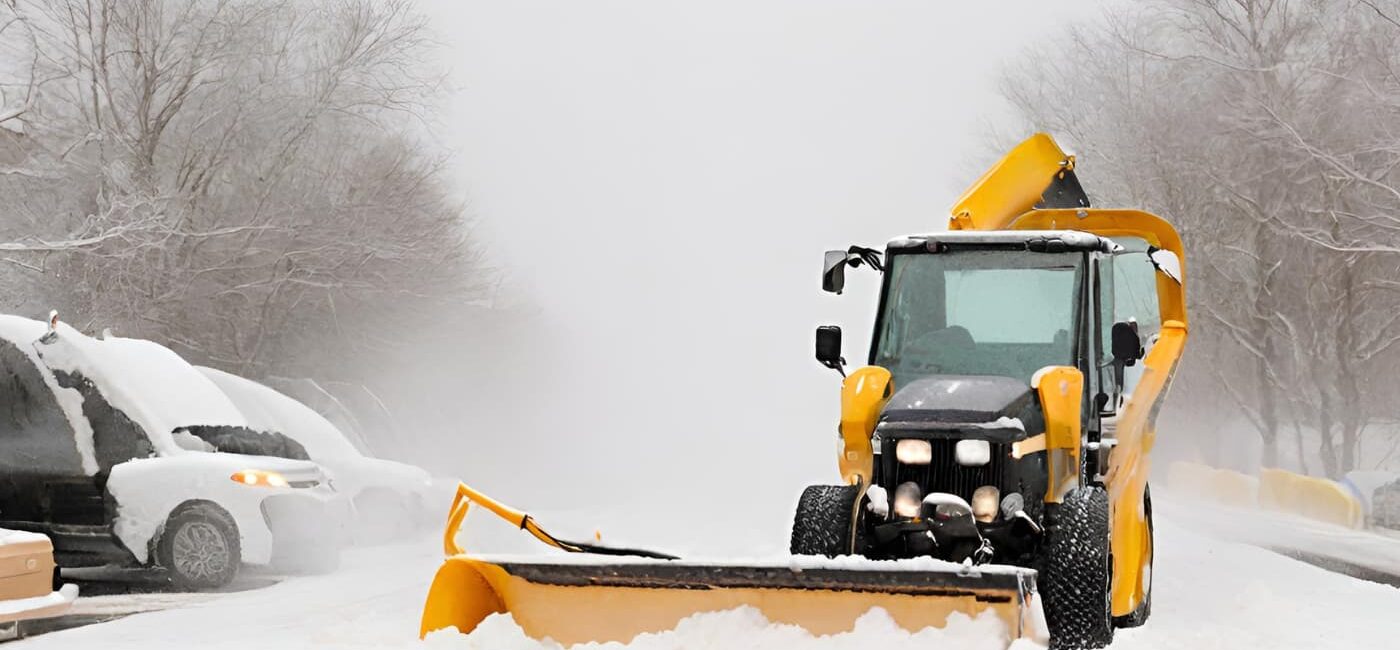Ensuring accessibility in winter is crucial, particularly for those with disabilities. This post examines the connection between snow removal and ADA compliance. It addresses challenges posed by winter weather, outlines ADA requirements for winter accessibility, and offers insights into best practices for ADA-compliant snow and ice management.
The ADA and Winter Accessibility
The Americans with Disabilities Act (ADA) stands as a cornerstone of inclusivity, ensuring that individuals with disabilities enjoy equal access to public places, regardless of the season’s challenges. When it comes to winter accessibility, the ADA remains unwavering in its commitment. The ADA’s key provisions related to winter weather accessibility emphasize the importance of maintaining clear and safe pathways for everyone. It requires businesses, property owners, and public entities to diligently remove snow and ice barriers that might impede accessibility. The ADA envisions a world where individuals with disabilities can navigate public spaces with the same level of convenience and safety as anyone else, even amid snowy and icy conditions. Understanding these ADA provisions is fundamental for promoting inclusivity and ensuring that the winter season doesn’t become a barrier for anyone seeking to enjoy the world around them.
Challenges of Winter Weather for Accessibility
Winter weather, with its snow and ice, presents unique and often formidable challenges for individuals with disabilities, particularly those with mobility impairments. The accumulation of snow and ice can create significant barriers, making it difficult for individuals who rely on mobility aids like wheelchairs or walkers to move around safely. Uneven and slippery surfaces can lead to accidents and falls, posing not only physical risks but also emotional and psychological challenges. Inadequate snow removal exacerbates these difficulties, potentially isolating individuals with disabilities and limiting their access to essential services, workplaces, and social activities. Recognizing these challenges underscores the critical importance of proactive and thorough snow and ice management, ensuring that individuals with disabilities can navigate public spaces with dignity, safety, and independence, even amidst winter’s harsh conditions.
Snow Removal Requirements Under the ADA
Under the Americans with Disabilities Act (ADA), specific requirements are set forth to ensure that winter accessibility is maintained for individuals with disabilities. These requirements include the timely removal of snow and ice from accessible pathways, ramps, and parking areas, all of which are crucial to providing unimpeded access. Moreover, the ADA underscores the importance of maintaining proper slopes on pathways, ensuring that they are neither too steep nor slippery. Tactile warning surfaces, such as detectable warning strips, are also mandated to alert individuals with visual impairments to changes in terrain, preventing potential hazards. It’s essential to recognize that these requirements are not mere recommendations but legal obligations designed to prioritize accessibility for all. Adhering to ADA guidelines for snow removal is not only a moral imperative but also crucial for avoiding potential legal repercussions and safeguarding the well-being of all individuals, regardless of their abilities. When considering commercial snow removal prices, businesses must factor in the cost of compliance to ensure accessibility is upheld during winter conditions.
Legal Implications of ADA Non-Compliance
Failing to comply with the Americans with Disabilities Act (ADA) requirements for snow removal can have significant legal ramifications for businesses and property owners. Non-compliance not only risks the safety and accessibility of individuals with disabilities but also opens the door to potential legal action. Legal implications may include costly lawsuits, fines, and penalties. Recent years have seen a notable increase in ADA-related lawsuits, with a focus on accessibility during winter months. For instance, businesses that neglect timely snow removal from accessible pathways, ramps, or parking areas have faced legal challenges resulting in substantial settlements and legal fees. These cases serve as stark reminders of the importance of winter accessibility compliance. Avoiding legal consequences is not only a matter of fulfilling legal obligations but also of upholding the principles of inclusivity and equal access for all individuals, regardless of their abilities. Complying with ADA requirements for snow removal is both a legal and moral imperative.
Community Outreach and Education
Community outreach and education play pivotal roles in promoting ADA-compliant snow removal practices and fostering inclusivity. It’s essential for businesses and property owners to engage with the community, including individuals with disabilities, to gather valuable feedback and insights. Hosting informative sessions or workshops can help raise awareness about the importance of winter accessibility and ADA compliance. By actively involving individuals with disabilities in the conversation, businesses can gain a deeper understanding of their specific needs and challenges. This feedback loop allows for continuous improvement in snow removal practices, ensuring that they align with the unique requirements of the community. Additionally, educating the broader public on the significance of accessibility during winter can create a more inclusive and supportive environment, emphasizing the collective responsibility to ensure that everyone has equal access to public spaces, regardless of the season’s challenges. Community outreach and education serve as catalysts for positive change, driving better winter accessibility and strengthening the bonds within the community.
Conclusion
Our exploration of ADA-compliant snow removal underscores the paramount importance of ensuring equal access for all individuals, regardless of their abilities, during the challenging winter months. The Americans with Disabilities Act (ADA) sets forth clear guidelines to prioritize accessibility, even in snowy and icy conditions, reflecting our commitment to inclusivity and fairness. It is not merely a legal obligation but a moral imperative to create spaces that are welcoming and safe for everyone. As we navigate the complexities of winter weather, businesses and property owners are encouraged to prioritize accessibility and engage in community outreach and education. By actively involving individuals with disabilities and fostering a sense of collective responsibility, we can create winter environments where all can participate fully and without barriers. Together, we can ensure that winter accessibility is a reality for everyone, reinforcing the principles of equality and inclusivity within our communities.
